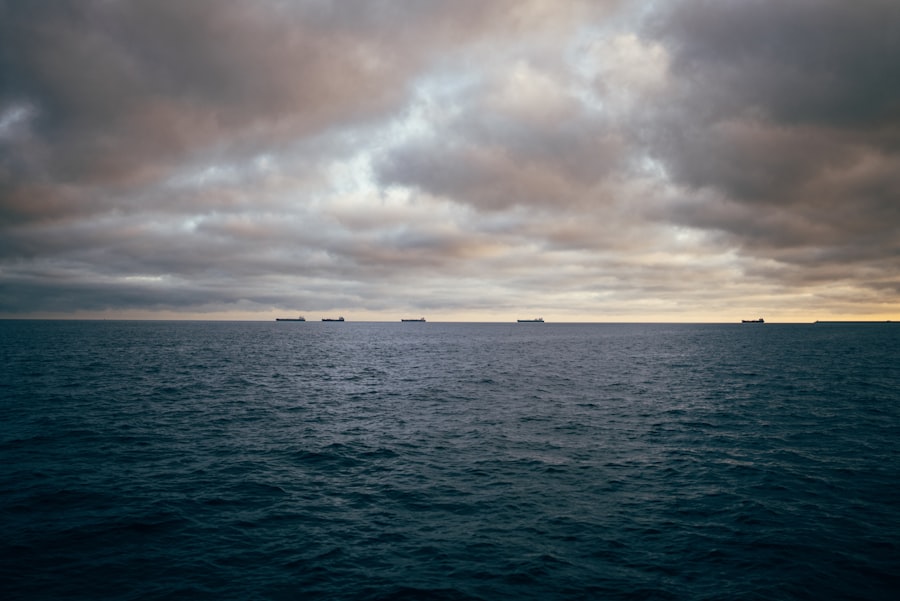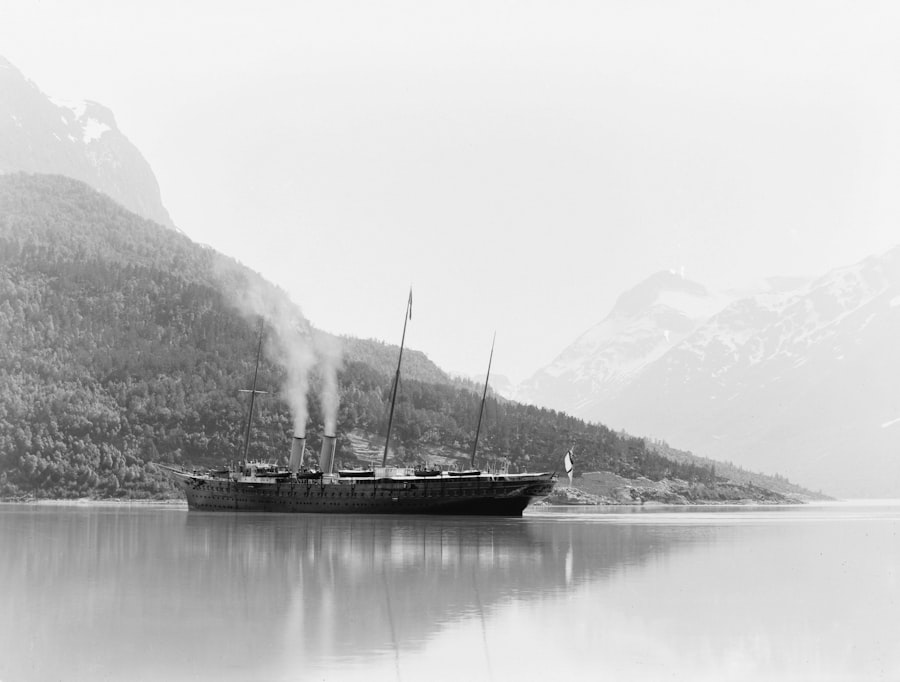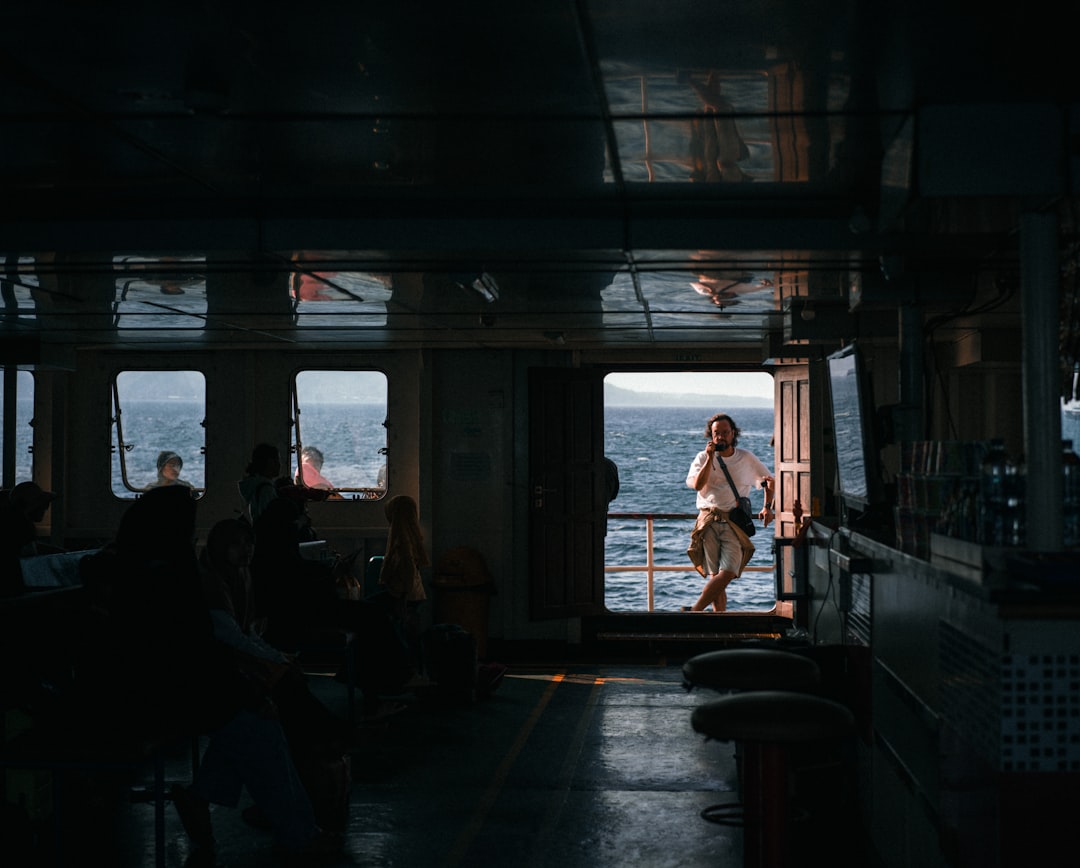The Drake Passage, a body of water situated between the southern tip of South America and Antarctica, is renowned for its tumultuous seas and unpredictable weather patterns. Stretching approximately 800 kilometers (500 miles) in width, this passage serves as a critical maritime corridor connecting the Atlantic and Pacific Oceans. Named after the English explorer Sir Francis Drake, who navigated these waters in the late 16th century, the Drake Passage has become synonymous with both adventure and peril.
Its unique geographical position not only makes it a vital route for shipping but also a significant area for scientific research and environmental studies. The passage is characterized by its deep waters and strong currents, particularly the Antarctic Circumpolar Current, which flows unimpeded around Antarctica. This current plays a crucial role in global ocean circulation and climate regulation.
The Drake Passage is not merely a geographical feature; it is a dynamic ecosystem that supports diverse marine life, including whales, seals, and various species of fish. As such, it holds immense ecological importance while simultaneously presenting challenges for those who dare to traverse its often-turbulent waters.
Key Takeaways
- The Drake Passage is a body of water between South America’s Cape Horn and the South Shetland Islands of Antarctica, known for its rough seas and challenging weather conditions.
- The Drake Passage has a rich historical significance as it was named after the English explorer Sir Francis Drake and has been a key route for explorers and traders for centuries.
- Navigating the Drake Passage poses significant challenges due to its unpredictable weather, strong winds, and rough seas, making it one of the most challenging maritime routes in the world.
- The Drake Passage is of great importance for shipping as it provides a crucial connection between the Atlantic and Pacific Oceans, allowing for shorter transit times for vessels traveling between the two.
- Advances in technology, such as improved weather forecasting and navigation systems, have greatly enhanced the safety and efficiency of navigating the Drake Passage for ships.
- Environmental concerns related to the Drake Passage include the potential impact of increased shipping traffic on the delicate Antarctic ecosystem and the risk of oil spills in the pristine waters.
- The economic impact of the Drake Passage on shipping is significant, as it offers a shorter and more direct route for vessels traveling between the Atlantic and Pacific Oceans.
- Safety measures for ships navigating the Drake Passage include strict regulations, mandatory ice-strengthened hulls for vessels, and the presence of experienced ice pilots on board.
- Alternative routes to the Drake Passage, such as the Panama Canal and the Cape of Good Hope, are available for ships seeking to avoid the challenging conditions of the passage.
- The future outlook for the Drake Passage as a shipping route is likely to see continued importance, with advancements in technology and infrastructure further improving safety and efficiency for vessels.
Historical significance of the Drake Passage
Historically, the Drake Passage has been a pivotal route for explorers and navigators seeking to chart unknown territories. In the 16th century, Sir Francis Drake’s expedition marked one of the first significant European voyages through these waters, paving the way for future exploration and trade. His journey not only demonstrated the feasibility of navigating this treacherous passage but also highlighted its potential as a shortcut between the Atlantic and Pacific Oceans.
This discovery had far-reaching implications for maritime trade routes, influencing the patterns of exploration and colonization in the Americas. Throughout the centuries, the Drake Passage has witnessed numerous expeditions, each contributing to humanity’s understanding of geography and navigation. The passage became a focal point during the Age of Exploration, as explorers sought new trade routes to Asia and beyond.
The challenges posed by its fierce winds and rough seas were often met with determination and ingenuity, leading to advancements in shipbuilding and navigation techniques. The historical significance of the Drake Passage extends beyond mere exploration; it symbolizes humanity’s relentless quest for knowledge and connection across vast oceans.
Challenges of navigating the Drake Passage

Navigating the Drake Passage is fraught with challenges that test even the most seasoned mariners. The region is notorious for its unpredictable weather patterns, which can change rapidly from calm to stormy conditions within a matter of hours. Strong winds, often exceeding 60 knots, can whip up towering waves that pose significant risks to vessels attempting to traverse the passage.
These conditions require ships to be equipped with robust hulls and advanced navigation systems to ensure safe passage through this volatile environment. In addition to the weather, the Drake Passage presents navigational challenges due to its complex currents and shifting icebergs. The Antarctic Circumpolar Current can create treacherous conditions for vessels, making it essential for navigators to possess an intimate knowledge of the area.
Icebergs calving from glaciers can also pose a significant threat, as they drift unpredictably through the waters. Mariners must remain vigilant and adaptable, employing advanced radar systems and satellite technology to detect potential hazards in real-time.
Importance of the Drake Passage for shipping
| Metrics | Data |
|---|---|
| Distance | 800 kilometers |
| Depth | 4,000 meters |
| Currents | Strong westerly winds and currents |
| Icebergs | Presence of icebergs |
| Importance | Critical route for global shipping |
The Drake Passage plays a crucial role in global shipping by serving as a key transit route for vessels traveling between the Atlantic and Pacific Oceans. Its strategic location allows ships to avoid the lengthy journey around Cape Horn, significantly reducing travel time and fuel costs. This efficiency is particularly important for commercial shipping lines that rely on timely deliveries to maintain their competitive edge in an increasingly globalized economy.
Moreover, the passage facilitates trade between continents, enabling the transport of goods ranging from raw materials to finished products. As international trade continues to expand, the importance of the Drake Passage as a shipping route is likely to grow. Its ability to accommodate large vessels makes it an essential corridor for bulk carriers and container ships alike.
The economic implications of this passage extend beyond shipping companies; they ripple through global supply chains, impacting industries and consumers worldwide.
Advances in technology for navigating the Drake Passage
In recent years, technological advancements have significantly improved navigation through the Drake Passage. Modern vessels are equipped with sophisticated navigation systems that utilize GPS technology, allowing for precise positioning even in challenging conditions. These systems enable mariners to plot safe courses through the passage while avoiding potential hazards such as icebergs and rough seas.
Additionally, advancements in weather forecasting technology have enhanced safety for ships navigating these waters. Real-time data on weather patterns and sea conditions allow captains to make informed decisions about their routes, minimizing risks associated with sudden storms or high winds. Furthermore, innovations in ship design have led to more resilient vessels capable of withstanding the harsh conditions of the Drake Passage.
These technological improvements not only enhance safety but also contribute to more efficient shipping operations.
Environmental concerns related to the Drake Passage

The ecological significance of the Drake Passage cannot be overstated; however, it is also a region facing increasing environmental concerns. As shipping traffic through these waters continues to rise, so too does the risk of pollution and ecological disruption. Oil spills, ballast water discharge, and other forms of maritime pollution pose threats to the delicate marine ecosystems that thrive in this region.
Moreover, climate change is impacting the Drake Passage in profound ways. Melting glaciers and shifting ocean temperatures are altering marine habitats and affecting species distribution. The passage serves as a critical habitat for various marine life forms, including krill, which are essential to the Antarctic food web.
As environmental changes continue to unfold, there is an urgent need for sustainable practices in shipping operations to mitigate their impact on this fragile ecosystem.
Economic impact of the Drake Passage on shipping
The economic implications of the Drake Passage extend far beyond its immediate geographical confines. As a vital shipping route, it facilitates international trade by connecting markets across continents. The efficiency gained from using this passage translates into cost savings for shipping companies, which can then pass on these savings to consumers in the form of lower prices for goods.
Furthermore, the passage supports local economies in regions surrounding it by providing opportunities for tourism and research activities. Cruise lines often include stops in ports along the southern coast of South America as part of their itineraries, bringing economic benefits to local communities. Additionally, scientific research conducted in these waters contributes to our understanding of climate change and marine ecosystems, further emphasizing the economic value of preserving this vital maritime corridor.
Safety measures for ships navigating the Drake Passage
Given the inherent dangers associated with navigating the Drake Passage, safety measures are paramount for ensuring successful voyages. Shipping companies are increasingly adopting comprehensive safety protocols that include rigorous training for crew members on emergency procedures and navigation techniques specific to this region. Regular drills and simulations help prepare crews for potential emergencies, fostering a culture of safety onboard.
These regulations encompass everything from vessel design requirements to operational protocols during adverse weather conditions. By adhering to these guidelines, shipping companies can minimize risks associated with navigating one of the world’s most challenging maritime passages.
Alternative routes to the Drake Passage
While the Drake Passage remains a critical shipping route, alternative paths do exist for vessels seeking to bypass its treacherous waters. One such alternative is the Panama Canal, which allows ships to transit between the Atlantic and Pacific Oceans without having to navigate around South America entirely. This route has gained popularity due to its ability to significantly reduce travel time and distance.
However, despite its advantages, alternative routes may not always be feasible for all types of vessels or cargoes. The Panama Canal has limitations regarding vessel size and draft, which can restrict access for larger ships or those carrying specific types of cargo. As such, while alternatives exist, they may not fully replace the need for navigating the Drake Passage in certain circumstances.
Future outlook for the Drake Passage as a shipping route
Looking ahead, the future of the Drake Passage as a shipping route appears promising yet complex. As global trade continues to expand, demand for efficient maritime corridors will likely increase. The passage’s strategic location positions it well to accommodate this demand; however, it will also necessitate careful management to balance economic interests with environmental sustainability.
Furthermore, advancements in technology will continue to play a crucial role in shaping navigation through these waters. Innovations aimed at improving safety and efficiency will be essential as shipping traffic increases. Additionally, ongoing research into environmental impacts will inform best practices for minimizing ecological disruption while maximizing economic benefits.
The continued relevance of the Drake Passage for ships
In conclusion, the Drake Passage remains an essential maritime corridor that holds significant historical, economic, and ecological importance. Its challenges are matched by its opportunities; while navigating these waters requires skill and caution, it also facilitates vital global trade connections. As technology advances and environmental concerns grow more pressing, finding a balance between safe navigation and ecological preservation will be paramount.
The continued relevance of the Drake Passage as a shipping route underscores humanity’s enduring relationship with the sea—a relationship marked by exploration, innovation, and adaptation. As we look toward the future, it is clear that this remarkable body of water will remain a focal point in discussions about maritime trade and environmental stewardship for years to come.
Despite the challenges posed by its notoriously rough seas, many ships continue to use this passage due to its strategic importance. For those interested in exploring more about the historical and current significance of the Drake Passage, a related article can be found on MyGeoQuest. This article delves into the geographical and navigational aspects of the passage, providing a comprehensive overview of why it remains a vital route for ships today. You can read more about it by visiting this page.
WATCH NOW! Drake Passage: Earth’s Deadliest Waters Revealed
FAQs
What is the Drake Passage?
The Drake Passage is the body of water between the southern tip of South America and the northern tip of the Antarctic Peninsula. It is known for its rough seas and strong winds.
Do ships still use the Drake Passage?
Yes, ships still use the Drake Passage as a route for travel between South America and Antarctica. It is one of the main ways to access the Antarctic Peninsula.
Are there any challenges associated with navigating the Drake Passage?
Yes, the Drake Passage is known for its rough seas and strong winds, which can make navigation challenging. It is also prone to storms and icebergs, adding to the difficulty of passage.
What types of ships typically use the Drake Passage?
Expedition cruise ships, research vessels, and occasionally cargo ships use the Drake Passage for travel to and from Antarctica.
Are there any alternatives to using the Drake Passage for travel to Antarctica?
There are alternative routes to reach Antarctica, such as flying to research stations or using other sea routes, but the Drake Passage remains one of the most common and direct routes for ships.
